BLUE ASH — Investigators and scientists are already working inside Hamilton County's new $55 million coroner and crime lab, which opened in April. The 87,000-square-foot facility is now drawing attention from around the region, the state of Ohio, and the nation.
"I think this is one of the most state-of-the-art crime labs in the country," said county coroner Dr. Lakshmi Kode Sammarco. "We have some very unique features in this building that were our brainchilds."
The differences between the new Blue Ash facility and the old one in Corryville are numerous – including basic necessities like consistent electricity. The previous facility was built in the early 1970s, prior to the advent of DNA evidence analysis.
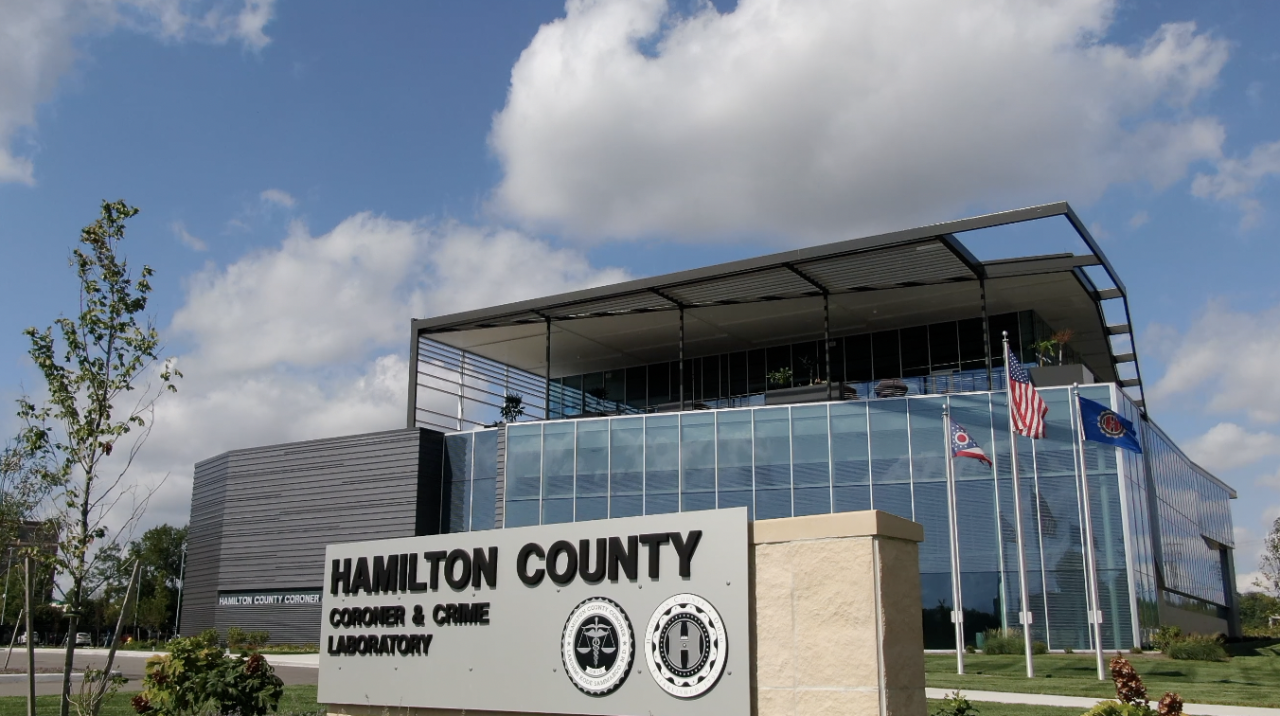
The new three-story facility on Carver Woods Drive features a morgue, a ballistics firing range, and labs for trace evidence, drugs, toxicology and forensic biology.
"I don't think people have a really good understanding of what we do in this building," said Sammarco. "What it does is it helps create a safer community, because we can give answers to law enforcement that they can then take and use to prosecute the criminals. And the faster you do that the faster you get them off the street."
Inside the crime lab
Every step of the investigative process is separated and controlled in the new facility. Evidence drop-off has its own entrance. There also is a dedicated elevator directly into the drug lab on the second floor.
"We were so close together in the other lab," said Mike Trimpe, a forensic scientist who runs Hamilton County's lab. "Trace evidence was right next to firearms, where there's gunshot residue everywhere. So now, no one goes into firearms and then comes into trace."
The building was designed to minimize, if not eliminate, possible contamination. And it keeps the labs all on the same floor, unlike the old Eden Avenue building, where scientists had to walk between floors for different tests.

Keeping everything on one floor meant some creative construction to handle a sensitive piece of equipment -- the scanning electronic microscope. It is used to magnify up to 10,000 times to find trace evidence and detect gunshot residue, but cannot be subjected to any vibration.
Hamilton County's lab gets gunshot residue cases from as far away as the Bahamas, Trimpe said. Its trace evidence program is one of a few in the region that also still does hair comparison analysis, a time-consuming investigative method that has often been replaced by a focus on DNA.
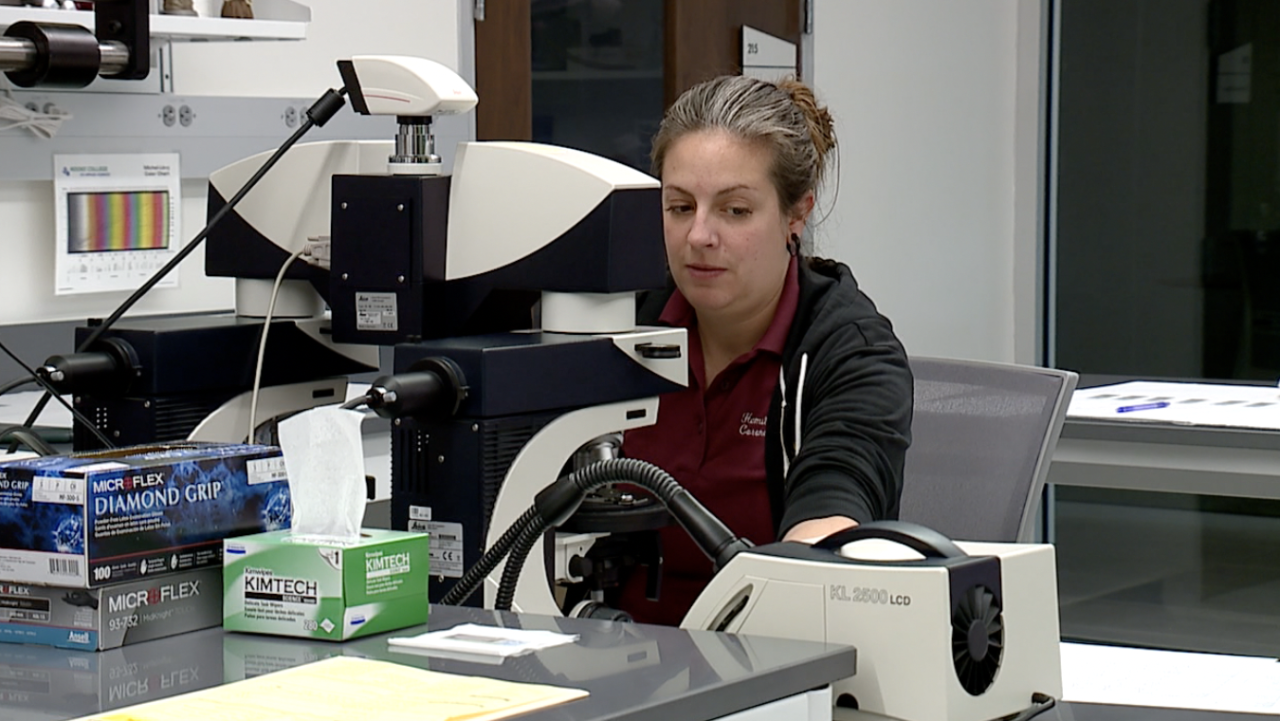
The drug lab is getting attention from across the country, as well. Trimpe said its turnaround time of four days for drug sample tests has caught the eyes of Ohio's Bureau of Criminal Investigation (BCI). The bureau sends about 200 cases to the lab each month, along with those from the U.S. Drug Enforcement Agency (DEA).
"No one beats [our time]," Trimpe said.
That's because of a rapid 10-day indictment rule in Hamilton County, Trimpe said. The lab handles more than 10,000 cases each year involving more than 35,000 items, Sammarco said.

All the new labs are designed for maximum efficiency and safety of the scientists. They feature articulated "snorkels" over work stations to protect against toxic fumes, functional "hoods" for ventilation, and raised gas and electric sources to minimize the risk of something coming unplugged or disconnected.
"Those are all safety things that we never had" Sammarco said. "There are so many built-in efficiencies."
Another example: plugs at table-height along the walls connected to multiple different circuits. In the old facility, some machines had to share outlets – if they even worked – in the same process.
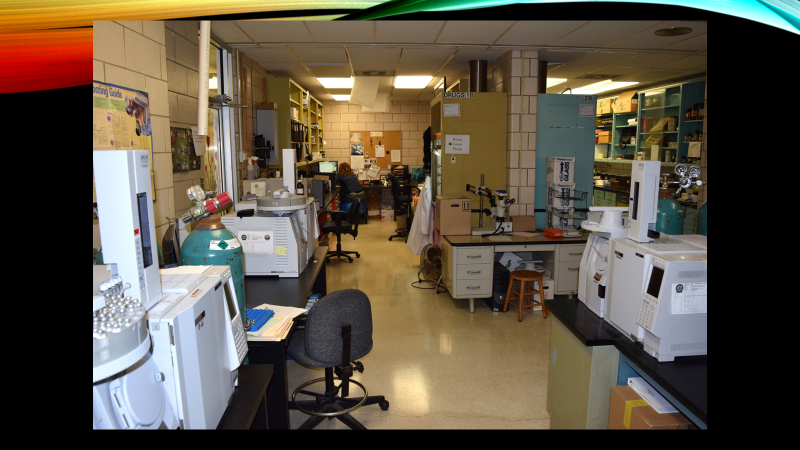
"With DNA, you'd have Step 1 and Step 2's machines plugged in. But in order to use the Step 3 machine, you had to unplug Step 2," Sammarco said. "We don't have to do that anymore. We can plug all these machines in at once and not have an electrical problem like we did before."
There are rooms built to be able to provide digital, remote testimony on court cases that allow the scientists to share their screen and show jurors their work without traveling to a courthouse.
A hallway of windows connects the trace evidence, drug, toxicology and forensic biology labs. This allows visitors to watch the scientists at work without disturbing them or possibly contaminating evidence. Across the hall is something else the staff never had before: offices and cubicles of their own.
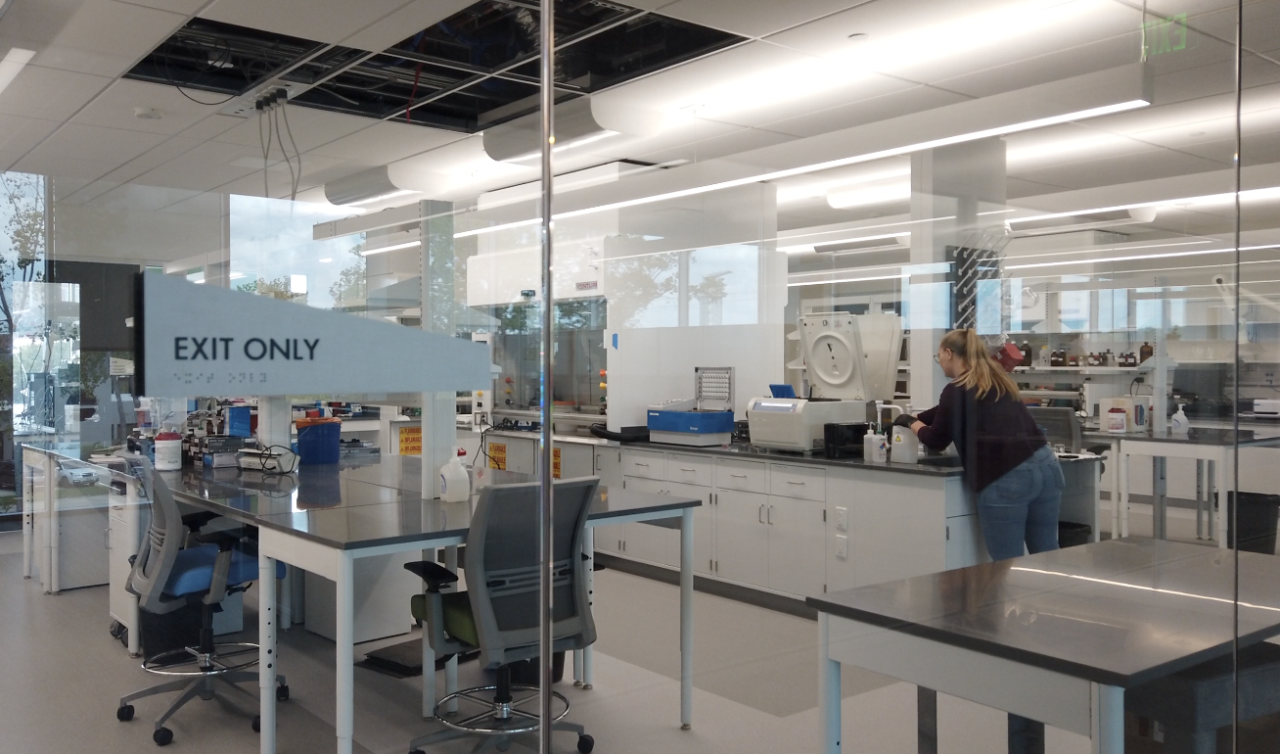
"We want to take people on tours," Sammarco said. "We want to inspire children to stick with the STEM subjects and say 'Chemistry may seem really boring, but look what you can do if you stick with chemistry. These are drug chemists and they work with very dangerous substances every day, but they're helping all of us stay safe by finding new drugs and variants.'"
Focus on firearms
On the third floor, down the hall from the deputy coroner and coroner investigator's offices, is firearm forensics with a large display window. It is where recovered guns come for analysis and, in some cases, to be compared to other similar models.
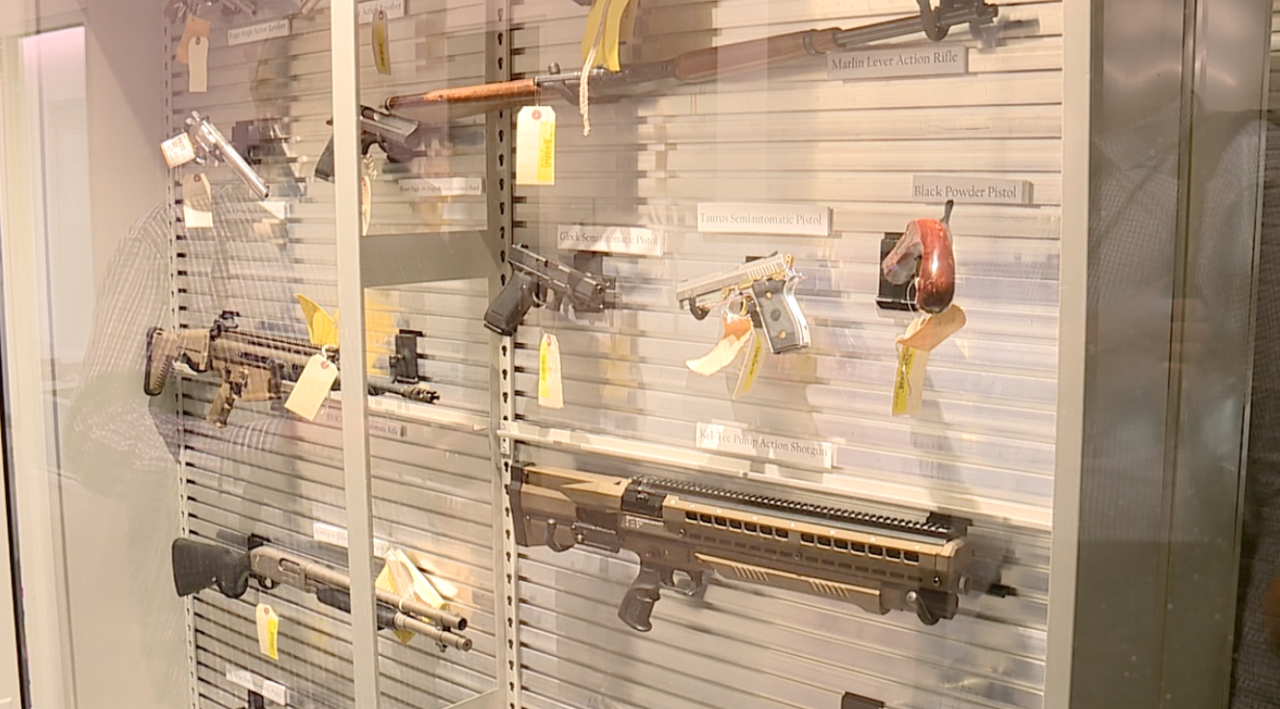
"We have, I believe, 600 or so firearms," said firearm forensics technician Chris Monturo. "We use them for repair if we need to restore a firearm back to working condition if someone intentionally tried to destroy it, and serial number restoration."
The space is much larger than in the old facility, where the firearms forensics office doubled as the firing range for testing ballistics.

Now that range is on the first floor in a cement-block room with a layer of armored plating and sound-dampening foam padding. The target can move to preset distances, much like at a modern commercial shooting range. A bullet from a crime scene can be compared to a bullet test-fired from a similar – or the same – gun in the range.
A massive morgue
The first floor is also where the coroners' work happens.
From inside a new observation room, law enforcement officers can watch an autopsy through windows and on closed-circuit television and ask doctors questions via headsets, something Sammarco said is unique to the building.

"We've already had several law enforcement agencies come and observe autopsies," Sammarco said. "To be able to interact and teach and demonstrate, I think is one of the reasons we wanted that."
The autopsy room features eight tables and stations. The old facility had just two.
"It was overwhelming [in the old building] in the fact that it was cramped," said forensic autopsy technician Cassie Deters. "When I walked in, my jaw dropped to the floor. It was incredible."
Deters said the office gets 5-7 cases each day and is taking bodies from surrounding counties.

In 2014, one of the body coolers at the old coroner's office failed. Sammarco said she got permission to buy the last two similar coolers in the country as backups at that time.
"We replaced one and had one spare and, believe it or not, six months before we moved into this building, we had to use that spare," Sammarco said.
The new facility comes with a new tool for her office, too. A CT scan allows doctors to do a virtual autopsy and see inside the body without ever leaving a body bag.

"We just scan them in the body bag and we're able to get a look at the evidence without making any cuts," she said. "We can do 3D imaging and 2D imagining and get a lot of information before an autopsy is even done, and in some cases, they may not even have to do an autopsy."
Sammarco said the morgue design was handled with respect in mind. In the old facility, bodies were delivered in the back door, visible to people and students passing the medical campus in Corryville.
Now, a sally port protects deliveries from the elements and offers a straight line into the body coolers after processing. They built a private seating area and bathroom for funeral home staff arriving to pick up bodies.

There is a separate intake area, autopsy room and body cooler for what the coroner's office calls "decomp," which features a robust ventilation system.
A dramatic change
Sammarco said her favorite part of the new facility is simple.
"Well, the windows are awesome," Sammarco laughed.
The old Eden Avenue facility had just 18 windows total. Sammarco said there were 1100 pieces of glass in the new one.
She said she hopes the new facility can be not only an educational space for local law enforcement and community members, but a draw for new forensic talent in the region and an opportunity for collaboration with the talent already here.
"This belongs to the people of Hamilton County, and I think they should be very proud of this building and the people who work here," she said.





